Image Gallery |

Please calibrate your monitor to be able to see 11 distinct shades
of grey in this strip.
Photographs of the Atrium
The following page illustrates the problems that might arise during comparison of the rendered images against the corresponding photographs of real-world environments.
All presented photographs were taken in the same lighting conditions.
The atrium is a very challenging environment to take photographs at the
night time because of mixed fluorescent and incandescent lighting. The
results obtained using the
standard photographic techniques were not satisfactory.
All images presented below were rendered using the Density Estimation Particle Tracing (DEPT) global illumination technique described in the reference [1]. The technique was implemented as a part of the Inspirer system (Integra, Inc.).
"Artistic" approach with manual tuning of surface reflectances and colors
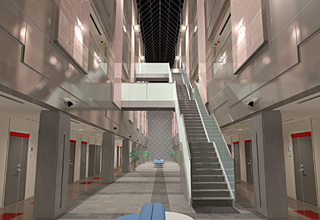 |
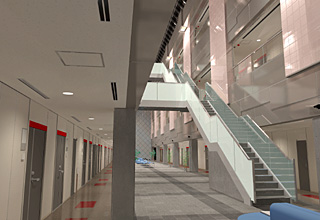 |
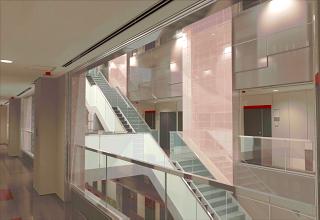 |
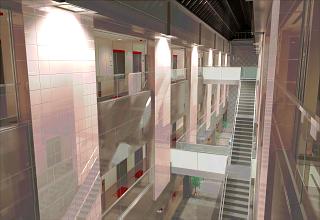 |
Physically-based lighting simulation using the measured BRDF values
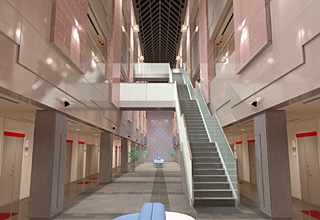 |
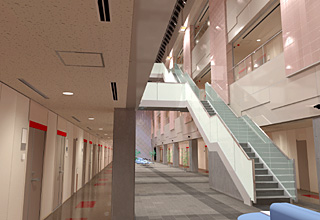 |
|
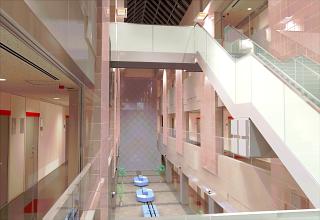 |
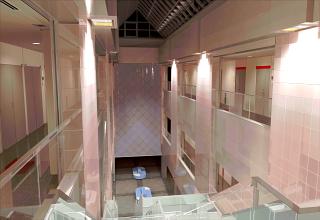 |
Physically-based lighting simulation using the averaged
specular and diffuse reflectances
(We refer to this approach KdKs)
Direct lighting only
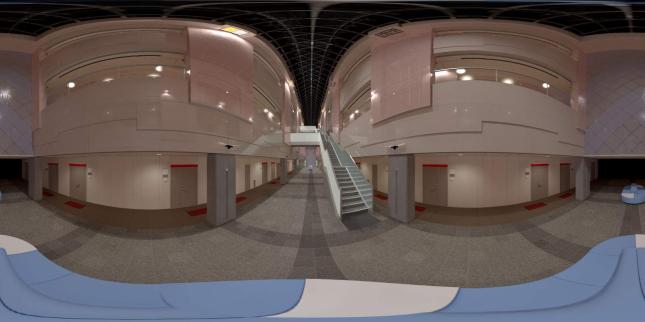
Panoramic image created by Edward
Kopylov.There is also an interactive panorama
based on the image above.
Note: It works only with Microsoft Internet Explorer.
|
Perception | Download sources |